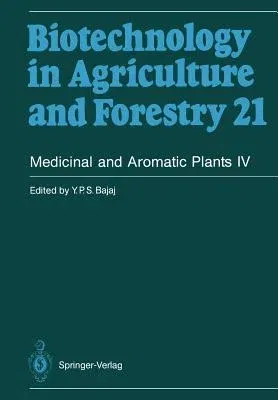Recently, the pharmaceutical industry has shown considerable interest in
the en masse micropropagation of elite plants, and the large-scale
produc tion of secondary metabolites in plant cell cultures through the
use of bioreactors. This is now being realized by the selection of
high-yielding somac1ones or through the production of hairy roots by
transformation with Agrobacterium rhizogenes. These new developments
need to be high-lighted and brought to the attention of workers dealing
with medicinal, aromatic, and other plants of industrial importance. A
series of books on the biotech nology of medicinal and aromatic plants
is therefore being compiled to provide a survey of the literature
focusing on recent information and the state of the art. This book,
Medicinal and Aromatic Plants IV, like the previous three volumes
(Medicinal and Aromatic Plants I, II, and III, published in 1988, 1989,
and 1991, respectively) is unique in its approach. It comprises 28
chapters dealing with the distribution, economic importance,
conventional propagation, review of tissue culture studies, and the in
vitro production of important medicinal and pharmaceutical compounds in
various species of Ammi, Bergenia, Canavalia, Capsicum, Cassia,
Cephaelis, Cornus, Cucurbita, Elettaria, Eupatorium, Genipa, Gentiana,
Gypsophila, Hygrophila, Leon topodium, Nerium, Picrasma, Polygonum,
Ptelea, Rheum, Scopolia, Silene, Solanum, Strophanthus, Tagetes, Thymus,
and Uncaria. This book is tailored to the needs of advanced students,
teachers, and research workers in the fields of plant biotechnology and
chemical engineer ing, pharmacy, botany, and phytochemistry."


